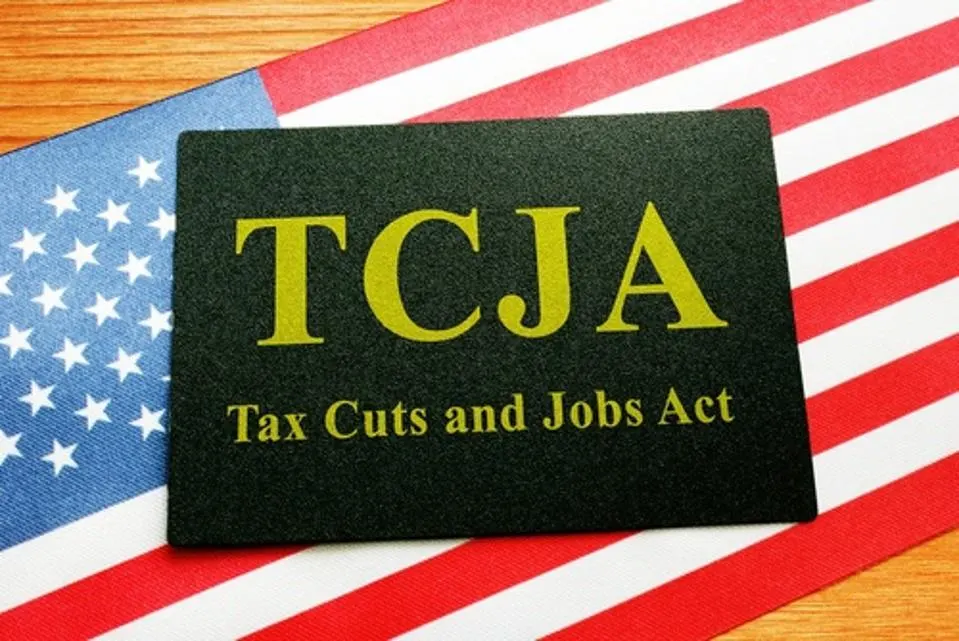Exploring the Potential Consequences of Extending the TCJA Tax Cuts
The Tax Cuts and Jobs Act (TCJA), enacted in 2017, brought significant changes to the U.S. tax system, affecting individuals and corporations alike. With many provisions set to expire by 2025, discussions about extending these tax cuts have sparked debates among economists and policymakers. This article examines the potential consequences of such extensions, from economic growth to federal debt implications.
The Foundation of the TCJA
Extending the Tax Cuts and Jobs Act (TCJA) beyond its current expiration dates could have far-reaching consequences for the U.S. economy and fiscal landscape. One immediate effect would be the continuation of lower tax burdens for individuals and corporations, potentially sustaining higher disposable income and business investment. However, this would also deepen the federal deficit, as the Congressional Budget Office (CBO) estimates that extending the TCJA could add trillions to the national debt over the next decade.
The long-term economic impact is debated. Proponents argue that lower taxes incentivize productivity and innovation, leading to sustained growth. Critics warn that rising debt could trigger higher interest rates, crowding out public investment in infrastructure, education, and healthcare. Additionally, the TCJA’s benefits have been unevenly distributed, with corporations and high-income earners seeing disproportionate gains. Extending the cuts without reforms could exacerbate income inequality, further polarizing economic outcomes.
Another concern is fiscal flexibility. With rising debt, the government may have less capacity to respond to future crises, such as recessions or geopolitical shocks. Policymakers must weigh short-term economic stimulation against long-term fiscal stability, especially as mandatory spending on programs like Social Security and Medicare grows. The decision to extend the TCJA will shape not just tax policy but the broader economic trajectory of the U.S. for decades.
Economic Growth vs. Federal Debt
The Tax Cuts and Jobs Act (TCJA) initially spurred economic activity, with GDP growth accelerating to 3% in 2018, its fastest pace since the Great Recession. Corporate tax cuts, slashed from 35% to 21%, fueled a surge in business investment, which grew by 9.4% in 2018. Proponents argue that these investments led to wage growth, with average hourly earnings rising by 3.4% in 2019, the highest in a decade. However, the long-term sustainability of these gains remains contentious.
While the TCJA delivered short-term economic boosts, it also contributed to a rising federal debt. The Congressional Budget Office (CBO) estimated that the law would add $1.9 trillion to deficits by 2028. Critics highlight that corporate tax cuts did not generate enough revenue to offset lost income, exacerbating fiscal pressures. Debt-to-GDP ratios, already elevated, climbed further, raising concerns about future interest payments crowding out public investments.
The trade-off between growth and debt hinges on whether the TCJA’s benefits—such as increased capital expenditures—outweigh its fiscal costs. Some economists argue that the tax cuts merely front-loaded growth, while others warn that unchecked deficits could trigger higher borrowing costs, undermining long-term prosperity. As the debate over extension looms, policymakers must weigh these competing dynamics carefully.
The Expiration Dilemma
The Tax Cuts and Jobs Act (TCJA) of 2017 included several provisions set to expire by 2025, creating a fiscal cliff that could reshape the economic landscape. Key expiring elements include individual income tax rate reductions, the doubled standard deduction, and the enhanced Child Tax Credit. For businesses, the immediate expensing of capital investments (bonus depreciation) will phase down, while the 20% pass-through deduction will sunset entirely. If these provisions lapse, middle-class households could face higher tax burdens, potentially reducing disposable income and dampening consumer spending—a critical driver of GDP growth.
The debate over extension is deeply polarized. Proponents argue that maintaining the cuts would sustain economic momentum, citing the previous chapter’s discussion of corporate investment and wage growth. Opponents warn of ballooning deficits, as the Congressional Budget Office estimates that extending the TCJA could add $3.5 trillion to the national debt over a decade. Political gridlock complicates the issue, with Republicans pushing for permanence and Democrats advocating for targeted reforms, such as preserving middle-class benefits while rolling back corporate breaks.
Economists are divided on the long-term effects. Some fear expiration could trigger a contraction, while others argue it’s a necessary step toward fiscal sustainability. This dilemma sets the stage for the next chapter’s focus on how extending the cuts might fuel inflation through heightened demand and constrained government revenue.
Inflationary Pressures
Extending the TCJA tax cuts could intensify inflationary pressures, a concern raised by economists who argue that sustained fiscal stimulus without corresponding revenue adjustments may overheat the economy. The TCJA’s individual and corporate tax reductions boosted disposable income and business investment, but prolonging these cuts risks amplifying demand-side inflation. Consumer spending, already a key driver of post-pandemic inflation, could surge further if households retain more after-tax income, straining supply chains and labor markets.
Additionally, reduced government revenue from extended tax cuts may force increased borrowing, exacerbating inflationary pressures through higher debt levels. The Federal Reserve’s ability to curb inflation via interest rate hikes could be undermined if fiscal policy remains expansionary. Some economists warn that this policy mismatch—loose fiscal tightening by the Fed—could prolong elevated inflation.
Critics also highlight that corporate tax cuts, if extended, might fuel asset price inflation rather than productive investment, as seen in post-TCJA stock buybacks. While proponents argue that tax cuts spur growth, the current economic climate—with tight labor markets and lingering supply constraints—suggests that extending them could worsen price stability, complicating future fiscal and monetary policy coordination.
Impact on Income Inequality
The TCJA’s impact on income inequality has been a contentious issue since its enactment. While proponents argue that the tax cuts stimulated economic growth, critics highlight how the benefits disproportionately favored high-income earners. According to the Tax Policy Center, the top 20% of earners received over 60% of the tax cut benefits, with the top 1% seeing an average reduction of $50,000 annually—far exceeding gains for middle- and lower-income households. This disparity stems from provisions like the lowered corporate tax rate, which primarily benefits shareholders and executives, and the pass-through deduction, which favors business owners in higher brackets.
Extending these cuts could further widen the income gap. Wealth concentration may intensify as capital gains and dividends—income sources skewed toward the affluent—continue to receive preferential treatment. Meanwhile, middle-class households, already grappling with inflationary pressures (as discussed in the previous chapter), may see stagnant real wages despite nominal tax savings. The erosion of progressive taxation could also reduce federal revenue for social programs, exacerbating inequality in access to education, healthcare, and mobility.
As the next chapter explores corporate investment, it’s worth noting that wage growth for workers has lagged behind stock buybacks and executive compensation, reinforcing the TCJA’s uneven distributional effects. Without structural reforms, extending the cuts risks entrenching a two-tiered economic system.
Corporate Investment and Wages
The TCJA significantly reduced the corporate tax rate from 35% to 21%, aiming to spur business investment and, in turn, boost wages. While corporate investment initially rose post-TCJA, studies suggest the surge was modest and short-lived. Research from the Congressional Research Service (2019) found that much of the investment growth was concentrated in stock buybacks and dividends rather than productive capital expenditures. This aligns with data showing S&P 500 companies spent over $1 trillion on buybacks in 2018, eclipsing wage increases.
Wage growth, a key selling point of the TCJA, has been underwhelming. Analysis by the Economic Policy Institute indicates that real wages for median workers grew only 1.2% annually post-TCJA—a rate consistent with pre-TCJA trends. Moreover, the benefits skewed toward high earners, exacerbating trends discussed in the previous chapter. While some industries saw temporary wage bumps, broader gains were stifled by corporations prioritizing shareholder returns over long-term labor investments.
If extended, the TCJA’s corporate provisions may deepen this divergence. Without structural reforms tying tax breaks to wage growth or capital investment, the policy risks perpetuating a cycle where corporate savings fail to translate into broad-based economic benefits—setting the stage for further fiscal strain, as explored in the next chapter on SALT deductions.
State and Local Tax Deductions
The TCJA introduced a $10,000 cap on state and local tax (SALT) deductions, significantly altering the tax landscape for residents in high-tax states like California, New York, and New Jersey. Previously, taxpayers could deduct unlimited SALT payments, reducing their federal taxable income. The cap disproportionately affects middle- and upper-middle-class households in these states, where property and income taxes often exceed the limit. Critics argue this effectively raises their federal tax burden, undermining the TCJA’s broader goal of reducing taxes for most Americans.
Potential consequences of making the SALT cap permanent include increased migration out of high-tax states, as taxpayers seek lower-tax jurisdictions. This could erode the tax bases of states reliant on progressive income taxes, forcing cuts to public services or higher taxes on remaining residents. Conversely, proponents claim the cap promotes fiscal discipline by reducing federal subsidies for high-spending states. However, without reform, the policy may exacerbate regional economic disparities, as wealthier taxpayers relocate while lower-income residents face reduced services.
Extending the SALT cap could also strain intergovernmental relations, as states explore workarounds like payroll tax swaps or charitable contribution schemes. The long-term fiscal impact hinges on whether states adapt by restructuring their tax systems or if federal policymakers reconsider the cap’s design to balance equity and revenue needs.
The Global Perspective
The U.S. tax landscape under the TCJA diverges sharply from other major economies, particularly in its emphasis on corporate tax cuts and territorial taxation. While the U.S. reduced its corporate tax rate from 35% to 21%, countries like Germany (29.9%) and France (25.8%) maintained higher rates but paired them with robust social spending and infrastructure investments. Extending the TCJA could further widen this gap, potentially enhancing U.S. competitiveness in attracting multinational investment but risking a race to the bottom in global tax rates.
However, the TCJA’s focus on domestic profits through provisions like the GILTI (Global Intangible Low-Taxed Income) tax contrasts with the OECD’s push for a global minimum tax of 15%. If extended, the U.S. may face friction with allies adopting the OECD framework, complicating cross-border trade and investment. Meanwhile, China’s strategic use of tax incentives for tech and green energy highlights how tax policy can target specific sectors—a nuance the TCJA lacks.
The U.S.’s reliance on debt-financed tax cuts also stands out. While Japan and the U.K. tolerate higher debt-to-GDP ratios, their tax systems are more progressive, balancing inequality concerns. Extending the TCJA without addressing fiscal sustainability could weaken the U.S.’s long-term position as global markets prioritize stability.
Long-term Fiscal Health
Extending the TCJA tax cuts could have profound implications for the U.S. federal budget and national debt. According to the Congressional Budget Office (CBO), making the individual and estate tax provisions permanent would add roughly $3.5 trillion to the deficit over the next decade. This would exacerbate an already unsustainable fiscal trajectory, with debt-to-GDP ratios projected to exceed 150% by 2050.
The long-term risks are multifaceted:
- Higher interest payments: Rising debt levels would force the government to allocate more resources to servicing debt, crowding out critical investments in infrastructure, education, and healthcare.
- Reduced fiscal flexibility: A ballooning deficit limits the government’s ability to respond to economic downturns or emergencies, such as recessions or pandemics.
- Intergenerational equity concerns: Future generations could face higher taxes or reduced public services to offset today’s deficit spending.
While proponents argue that tax cuts stimulate growth, the CBO and Tax Policy Center suggest that any economic boost would be insufficient to offset revenue losses. Without corresponding spending cuts or revenue-raising measures, extending the TCJA could deepen fiscal instability, undermining the U.S.’s ability to maintain competitive public investments—a critical factor in global economic leadership. This sets the stage for exploring alternative policies in the next chapter.
Policy Alternatives
Extending the TCJA tax cuts is not the only path forward. Policymakers could consider targeted tax reforms that address economic inequality while maintaining revenue neutrality. For example, expanding the Earned Income Tax Credit (EITC) or introducing a progressive consumption tax could stimulate demand among lower-income households without exacerbating deficits. These measures could boost economic activity more efficiently than broad-based cuts, though they may face political resistance from those favoring simpler tax structures.
Another alternative is spending adjustments, such as reallocating funds toward infrastructure or education. Investments in productivity-enhancing sectors could yield long-term growth, offsetting the need for deficit-financed tax cuts. However, this approach requires careful prioritization, as misallocated spending could strain budgets without delivering measurable benefits.
A hybrid approach—combining moderate tax adjustments with deficit reduction measures—might offer balance. For instance, allowing some TCJA provisions to expire while preserving incentives for R&D could sustain innovation without deepening debt. The trade-off here is complexity; layered policies risk creating compliance burdens or unintended distortions.
Each alternative carries distinct economic and political implications, requiring rigorous cost-benefit analysis to avoid the fiscal pitfalls highlighted in the previous chapter while aligning with future policy goals.

Conclusions
Extending the TCJA tax cuts presents a complex trade-off between stimulating economic activity and exacerbating fiscal challenges. While the cuts have spurred corporate investment, their benefits to wage growth and economic equality remain questionable. As policymakers weigh the options, the long-term health of the U.S. economy and the fairness of its tax system hang in the balance.



